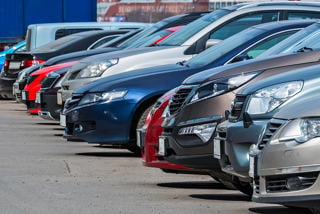By Graeme Banister, director at Mobilityways
We are now three months into the new Zero Emissions Vehicle (ZEV) Mandate which demands that 22% of all new cars sold this year are BEVs.
In January, the percentage of sales of new EV cars stood at 14.7%. However, many across the market now believe that the new car ZEV mandate will be hit this year, in all probability by a combination of reducing EV prices - already average discounts are running at close to 11% and increasing internal combustion engine (ICE) vehicle prices.
Bear in mind that OEMs will face fines of £15,000 per new ICE vehicle sale that takes the manufacturer away from their mandated sales target.
Furthermore, within five years the new EV car mandate will increase to over half (52%) of all new cars. By 2030, the target rises to 80%.
This equates to a hell a lot of stick being applied to force OEMs to produce and sell more EVs relative to ICE vehicles.
However, it is also becoming increasingly clear that the Government is over-reliant on large fleet owners and managers, guided by OEM pricing incentives, to reduce transport emissions which is still the largest single source of carbon emissions in the UK - making up 26% of the UK's total emissions in 2021 (427 MtCO2e).
Meanwhile, key carrots like the EV Chargepoint Grant has been restricted to urban flat owners who rely on on-street parking.
Other households now have to pick up the £1,000-plus bill for installing a smart charger, possibly more if your home electricity supply and/or fuse box needs upgrading.
During our work to help large UK employers to reduce their workers’ commuting emissions, we have found that many companies will not be able to reach their company-wide ‘net zero in travel’ goals by simply offering more staff new EV company cars and vans.
The migration to EV company cars needs to be married with incentives to make modal shifts to greener transport alternatives to ensure the UK’s emissions targets are met.
Indeed, five million tonnes of carbon dioxide equivalent emissions (MtCO2e) per year of abatement that has already been attributed to ‘modal shifting’ from single occupancy vehicles to more sustainable modes of transport.
The Department for Transport (DfT) has even articulated many ways to encourage these modal shifts. However, these ideas have since been removed from their own delivery pathways.
Suffice to say, there is growing concern about the absence of incentives and holistic thinking in this area because, as the Climate Change Committee (CCC) explained in its latest report on the Government’s progress towards Net Zero, UK emissions from surface transport rose by 11% in 2020-21, and by a further 3% in 2021-22.
Emissions from road freight have actually increased by 4% since 2019 and total freight ‘vehicle-kilometres’ in 2022 sat only 5% below pre-pandemic levels, the CCC found.
As we see it, without new government policy articulating consumer incentives (as well as supply side disincentives), it’s highly likely that surface transport emissions as well as traffic levels will return to pre-pandemic levels before 2030.
This creates a significant risk that the UK will miss its 2030 Nationally Determined Contribution emissions reduction targets.
To round back to where we started, there appears to be an over-reliance by the current UK Government on forcing OEMs (and by extension car dealerships) to increase the percentage new EV van and car sales year-on-year to bring surface transport emissions down ‘naturally’.
Meanwhile, relatively inexpensive incentives which are needed to encourage modal shifts and wider adoption of more car-sharing, community car clubs, active travel and use of public transport, are being neglected.
For example, local authority Active Travel budgets were cut drastically in March 2023 from £700 million in 2021 to just £100m for 2023/24.
Meanwhile, up to 40 community car clubs are set to close after the last insurance firm covering such groups announced it was pulling out of the sector.
Enticing people to make modal shifts towards greener alternatives demands a focus on hearts as well as heads.
There needs to be a clear drive to entice many more people to shift away from that regular, single occupancy commute which is the most carbon inefficient journey most people make.
Exploring greener transport options needs to be easy, comfortable, even attractive. Commuters need to know it’s for the good of society as well as the planet and their pockets.





















Login to comment
Comments
No comments have been made yet.